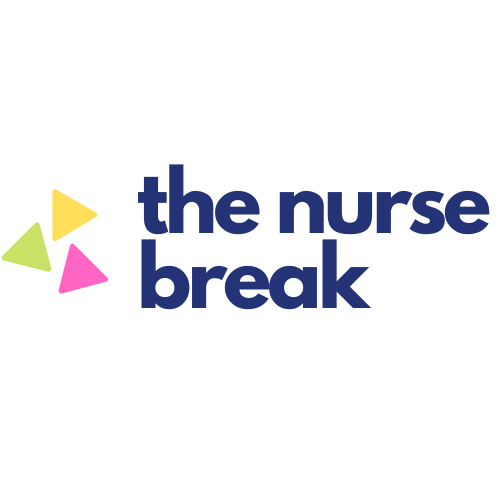Table of Contents
Meet Joseph D’Arrigo. He has recently finished his graduate nurse year in emergency after having a rotation in Orthopaedics. Below he documents his experience, tips and advice!
To read other graduate nurse related articles go here
Introduction
My name is Joe. I’m fresh out of my grad year working in the Emergency Department. I wrote a little about my first rotation in orthopaedics HERE earlier this year in a previous post and having wrapped up my grad year in January this year, I thought I’d write a little about my second rotation and what it was like coming to the end the grad y ear and also to share some tips and options once you finish.
My grad year was 12 months long starting in January 2020 and finished this year in January 2021. For my second rotation, I was allocated emergency. I was beyond excited! I’ve known since I started nursing that emergency nursing was an area that I wanted to try. It was a really interesting time to start my rotation in the ED. Right at the heart of the second lockdown and although there were no restrictions for seeking medical assistance, the number of patients presenting to the emergency department was dramatically reduced, I remember working several shifts with no patients at all!
Mind Shift from ward to ED
It was a massive mind shift from my previous rotation on a ward. Routine parts of a usual shift I’d become familiar with such as medication rounds, shift planners, and sitting down to write progress notes at the end of a shift was thrown out the window. ‘Routine’ is not a word I could use to describe ED! You are allocated your 3 patients if you are working in the main department or 4 if you are working in the short stay unit (SSU)/clinical decision unit (CDU).
Each patient that presents to emergency has to have an outcome i.e., discharged/admitted to a ward/go to theatre within 4 hours of presenting to emergency under what’s known as the National Emergency Access Target (NEAT). This is a target that was set in place for all Australian emergency departments in 2012 to try and reduce ED overcrowding and improve patient outcomes. If a patient NEAT breaches, there is also another target in place for patients to be admitted or discharged within 24 hours.
I can’t say I know a great deal about this target but it doesn’t look great if a patient has been in the department for 24 hours not to mention the issues that can cause for patient flow in the department. As such, ANUMs will usually move mountains to make sure patients don’t breach 24 hours in ED!
The emergency department where I completed my rotation was a level 2 urban district ED. It had 3 resus bays, one negative pressure isolation room, 6 high acuity cubicles, 14 low acuity cubicles, 2 AV offload cubicles, 6 bed/chair fast track, 4-bed paediatric ed, 4-bed paediatric SSU, 1 consult room, 1 eye room, 1 procedure room, 1 plaster room, 6 SSU beds and 8 CDU beds.
Othopaedics was the bread and butter there, so there was always lots of orthopaedic presentations. Aside from that, although there wasn’t a dedicated paediatric ward, there was a paediatric ED and paediatric CDU. And then just your standard home teams such as plastics, general surgical, and general medicine.
What were your shifts and staffing mix like?
The typical staffing for a shift was; 1 ED associate nurse unit manager (ANUM) that is in charge of the emergency department for the shift and takes care of staff allocations, patient flow in the department and lots of other miscellaneous tasks, 2 critical care registered nurses (CCRN’s) that staff the resus bays, 2 CCRN’s or triage trained RN’s to staff Ambulance Victoria) AV triage and waiting room triage, and 1 nurse to 3 patients in ED. In SSU there is 1 SSU ANUM who has the same role as the ED ANUM but just oversees SSU. Then the ratio in SSU is 1 nurse to 4 patients.
As is the case in most public hospitals, we had rotating rosters so you put in your shift preferences and then you get allocated your roster. The rostering ANUM in ED was an absolute champion. You generally got all your preferred shifts and very rarely ever got rostered for the dreaded late early which are always a killer!
AM shift was 0700-1530, PM shift was 1330-2200, and the night shift was 2100-0730. Every 6 or so weeks everyone had to do a fortnight of night shifts, not that I minded though. Night shifts were always great and involved uber eats, the coffee van which came early morning, and someone always baked something and brought it in – YUM!
What supports as a graduate nurse do you get?
We had a fantastic grad education team in ED. We had 1 clinical nurse educator (CNE) and 3 clinical support nurses (CSN’s). Initially, when I started in the ED, they would shadow you for each shift to provide support. Then as I gained more confidence, they were just available to call on for support when needed. The education team were always really accessible. Except on nights and public holidays, every shift, one of the educators would be around on the floor for support if needed.
What kind of patients do you care for?
This really just depends on the day. Anyone can breeze through the doors! Within reason though. The ED I completed my rotation at didn’t have a cardiac catheter lab so it was rare to see STEMI’s. Amongst the most common presentations would have to be chest pain and abdominal pain.
Second to that there was always lots of mental health presentations such as patients brought into emergency under what’s known as a section 351. This is a specific section of the Victorian Mental Health Act that provides authority to Victoria police officers to bring a person into an emergency department for mental health assessment if they are posing a danger to themselves or others.
Can you discuss your experience with paeds nursing?
Although I didn’t complete a rotation specifically in paediatric nursing, the emergency department where I completed my rotation did cater for paediatric patients so I did gain some exposure to paediatric nursing. I think the two biggest pieces of advice I can give are that I cannot stress enough how important it is to build a rapport with paediatric patients. If they don’t trust you, they will not let you do anything and it will make your shift a living nightmare!
Also, parents can smell fear a mile away! Honestly – fake it till you make it! If you appear unsure or not confident parents will develop a mistrust for you. This is absolutely nothing against you – if you place yourself in their shoes, this is their child that they love to bits, and are already very distressed about having to bring to an emergency department.
To reduce the parent’s anxiety, keep them in the loop as often as you can, even asking the parents to help in aspects of their child’s care – they can keep track of what their child has had to drink, when they’ve passed urine, and when they are in pain. This is a great way to involve parents in their child’s care.
On a more clinical note, some really important things to keep in mind for paeds patients is obtaining a baseline weight. When giving paediatric patients medications the dosage will always be carefully titrated by the child’s weight as they are much smaller little tackers than a whopping 80kg adult so medications aren’t required in such large doses.
It’s also handy on admission to find out the child’s immunisation status. If the child has been immunised against a disease then the majority of the time it can be ruled out as a differential diagnosis. Last but not least, because kids are much smaller any fluid gains and losses are much more significant. As such maintaining a strict fluid balance is really important. The majority of parents will be more than happy to keep a record of what their child has had to drink and when they’ve passed urine if you ask them.
What surprised you the most throughout your graduate year?
How quickly you pick things up. Initially when you start there is so much to take in and you feel overwhelmed and think that you’ll never become competent doing it all. I spoke to my ward educator about this on my first rotation and she told me that there is no set timeframe for you to pick things up and become confident working independently.
The ward educators will continue to support you until you are confident enough however long that takes. At the end of the day you are a grad and that whole point of the program is to transition you into nursing.
The biggest learning curves you had?
Initially what I struggled with the most was the pace in emergency. When coming onto a shift in ED, you generally start by receiving handover for your patients, checking all the equipment in your cubicles such as oxygen, monitoring and suction equipment. As an aside – It is anyway, but in emergency this is an absolute MUST.
Nothing sucks more than having a code and equipment in the cubicle that doesn’t work and/or is missing! Then you complete a primary and secondary assessment for your patients……in an ideal world. Often in ED, you’ll come onto the shift and AV have just dropped off ‘George’ who says he feels like an elephant’s sitting on his chest and needs bloods taken, IVC, ECG, cardiac monitoring, analgesia which are all priorities.
Meanwhile old mate in the cubicle next door is dropping their GCS and needs attention and nana is the cubicle next door is ready for discharge and needs scripts chased and IVC taken out – the later might seem pretty low on the radar, but that’s a cubicle being taken up that a patient in the waiting room most probably needs.
However, emergency is very much a team environment and there is loads of support. Within around 4 weeks I’d found my feet and was confident with the pace.
What mistakes have you made that others should learn from you?
I think specifically when starting out working in emergency it is tempting to rush things because you are a novice trying to consolidate new learning, but also under so much pressure to keep the ball rolling with your patients. Bottom line – don’t.
Either take your time and don’t rush so that you can fully complete assessments or if you are really struggling with you time management go to the ANUM and tell them you need some help to catch you up. I think it’s really important not to be afraid to do this.
It doesn’t in any way mean that you are incompetent and once you’ve had a few months in ED you’ll feel so much more confident working in emergency and have developed much better time management skills once you know what things are priorities and what can wait.
What unique experiences did you have?
COVID. Really, I think that’s about as unique an experience as it gets. I couldn’t have even begun to imagine completing my grad year during a pandemic at the start of 2020.
It’s been just mind-blowing seeing the public health response unfold in front of your eyes and how health services have adapted so rapidly. It’s provided some really valuable experience though in caring for respiratory patients and isolation nursing.
What upskilling you have done?
In ED the first course that they generally like you to have under your belt is IV cannulation. I’d already completed this in my last rotation which was handy. Another course I completed was collar application which particularly useful in ED with lots of polytrauma presentations, falls etc. Also completed a course in ECG interpretation.
As a grad, there’s certainly no expectation that you’ll be the first cab off the rank to spot a 2nd degree AV block! But it’s very handy to know at least the basics such as recognising acute ischaemic changes so that you can escalate those kinds of findings early.
Last, of all, the ED I completed my rotation at dealt with paediatric patients so I completed an in-house paediatric nursing course after which you complete a supported paediatric shift where one of the ED educators shadow you for the shift so you can get a feel for what needs doing and what the priorities are when looking after kids.
What would have made your experience better?
Nothing. It was a fantastic experience, I learnt loads and gained so much invaluable experience. It was challenging from the education perspective with COVID as the majority of study days had to be over zoom which I personally don’t take in as much information from as face-to-face sessions, most of which had to be cancelled due to social distancing requirements. But towards the end of my rotation when restrictions started easing again face-to-face education slowly resumed.
What happens at the end of you graduate year?
For me, I felt like my grad year came and went in a flash! You can get a good feel for different areas that you might like through your rotations. Or it may even be the case that one or both of your rotations affirmed for you that those are areas you don’t want to work in – totally cool! That’s good! And finding your feet is what the grad year is all about. Not long into my second rotation, we got sent a survey where we submitted preferences for what we’d like to do beyond our graduate year.
One option was to do pool nursing. This is where you are contracted to a set number of hours each fortnight, and you’ll be given shifts anywhere across the hospital that you are qualified to work in to fill those hours. Another option is the casual bank. This is where you are not contracted set hours but are offered shifts when they are available. When you are on the bank you don’t receive leave or sick entitlements.
Another option is to complete a transition to a speciality practice program (TSP). TSP programs are offered by most speciality wards such as ICU, Paediatrics, Theatre, ED, and Cardiac to name a few and applications usually open towards the end of the year but check each health services careers page for more information.
The idea of TSP is to give you an introduction to the speciality area to see if you like it and if you do, to go on to complete post-graduate studies to work in that clinical area. If you really liked a particular ward there is always the option to check out vacancies on the health service’s careers page or even chat with the ward nurse unit manager.
What’s next for your career?
I’ve moved to the casual bank in emergency at the health service I completed my graduate year at. They have 3 ED’s across their campuses which I pick up shifts at a few times a month. They have different specialities at each campus so you get to see a really diverse range of presentations.
In February 2021 this year, I started an ED TSP program at another health service which I had applied for last year which lasts for 12 months. I would love to do some nursing in the UK, and that was my plan post completing ED TSP, but unfortunately, that’s off the cards for a while! After TSP I would like to consolidate knowledge for another year before continuing on to complete postgraduate studies in ED nursing.
To read other graduate nurse related articles go here





